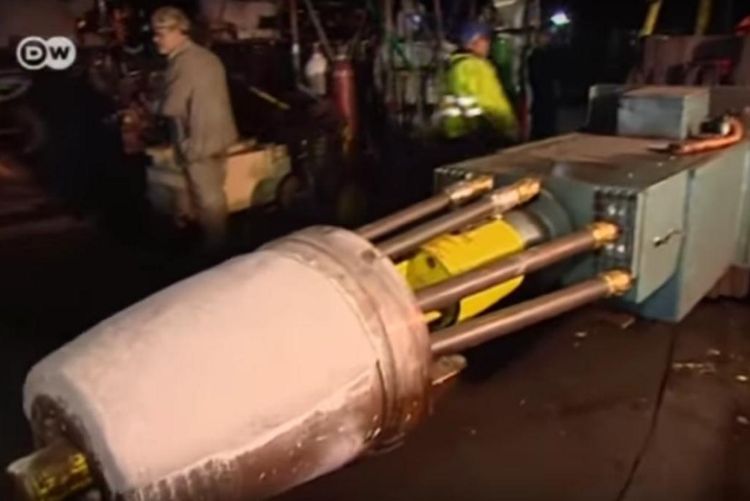Nothing says raw power like the hellish fury of a blast furnace, and the 300-foot-tall (91.4 m) Schwelgern 2 is the biggest blast furnace in all of Europe.
In Duisburg-Schwelgern, Germany, it’s still the Iron Age.
Manufactured by ThyssenKrupp and brought online in 1993, the Schwelgern 2 has produced almost 86 million tons (78 million metric tons) of iron over a total of 21 years in continuous operation. It was taken offline from June to October 2014 for a massive overhaul.
Advertisement
ThyssenKrupp stated that 7,716 tons (7,000 metric tons) of refractory material (material that retains its integrity at high temperatures) were used to replace the furnace’s almost 7-foot-thick (2.1 m) lining. One thousand construction workers took part in the project.
Watch the video and see as production engineer Rainer Klock and a colleague are the only men allowed to enter an open ventilation shaft, carrying a small camera, to inspect the interior of the monumental furnace.
Besides the furnace lining, just about every vital component was upgraded as well, like the massive, car-sized hot-air injectors pictured below.
These monsters stoke the intense flames in the 49-foot-diameter (14.9 m) furnace to over 3,632 degrees Fahrenheit (2,000 degrees Celsius). This inconceivable heat is produced by burning coal, melting the ore and separating out the metal.
EPC Engineer explains that the liquid iron then runs to the bottom of the furnace, where it is extracted from tap holes for further processing into the steel used to make car parts and consumer goods.
Mining Weekly reports that post-overhaul, Schwelgern 2 can produce over 13,228 tons (12,000 metric tons) of pig iron a day, eating raw ore and pouring out the stuff our modern world is built on.
Watch the video now, and see the inside of this high-tech volcano. Share if you love fire and steel!
Advertisement


